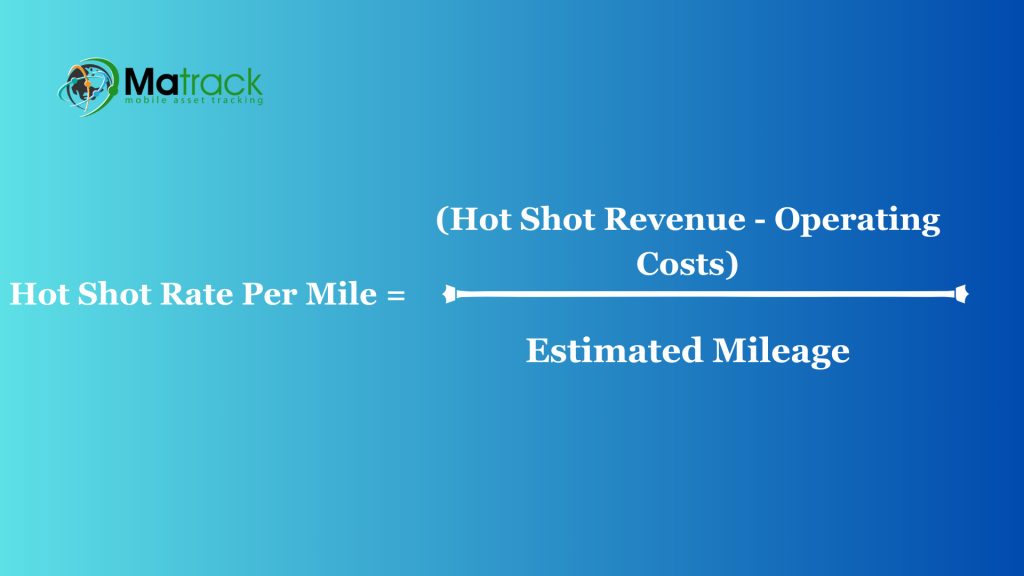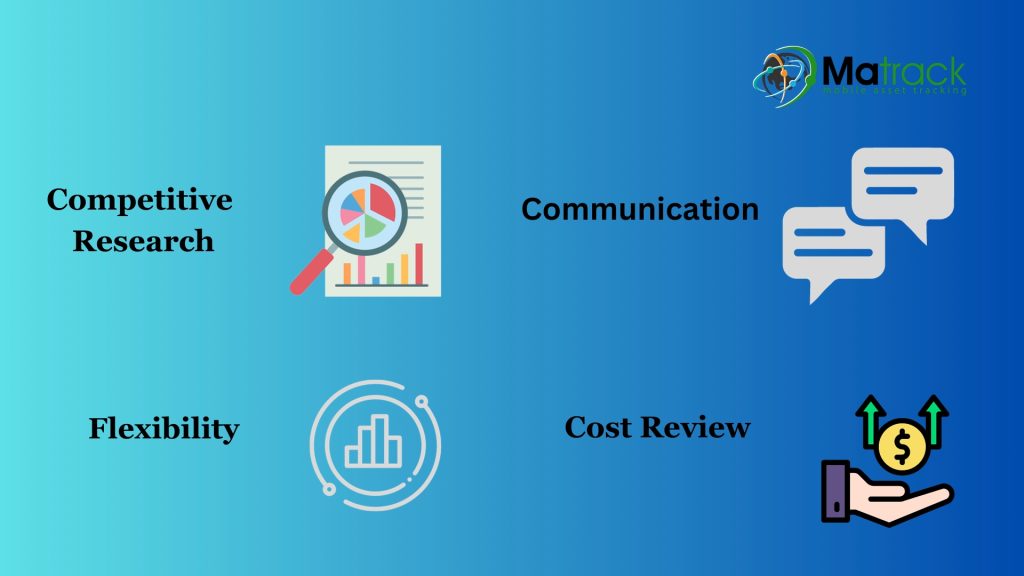How to Set the Best Hot Shot Rates Per Mile?
Truck drivers who want to make some extra cash like to do “hot shot trucking.” Why not? Your income goes up, and you move less. It does depend on your Hot Shot Rates Per Mile, though. In this specialized field, it’s all about speed, accuracy, and getting high-priority goods to their destinations as soon as possible. Your success depends on setting the correct per-mile rate for every job. We talk about the same thing in this blog.
Hot Shot Trucking is a subset of the trucking industry specializing in time-sensitive, smaller loads. It is the sprinter of logistics, catering to shipments that require immediate attention and cannot wait for traditional long-haul transportation hence, calculating hot shot rates becomes crucial.
Calculating the Hot Shot Rate involves considering several factors, such as the distance to be covered, the urgency of delivery, and the specialized equipment required. These shipments are typically smaller than those handled by traditional trucking, making them ideal for specialized equipment. Hot Shot Trucking relies on specialized trucks and trailers to handle these unique, time-sensitive shipments.
Calculating the Hot Shot Rate: A Basic Framework
Hot Shot Rate is not a shot in the dark; it follows a logical framework:

To break it down further:
Hot Shot Revenue
A shipment’s or a job’s Hot Shot Revenue is the sum of all money made from that shipment or that task. All load-related income streams must be accounted for to arrive at an appropriate estimate. All relevant surcharges and accessory costs, in addition to the base shipping rate and any applicable fees for express shipping, weekend delivery, or special handling, are included in this total. When calculating hot-shot rates per mile, this is a major consideration.
Operating Costs
Operating costs encompass all the expenses associated with running your hot-shot business and determining your hot-shot trucking rates. These costs can vary but typically include:
- Fuel: This is a significant expense in the trucking industry. Consider the current fuel prices in your area and estimate the fuel consumption for the specific shipment.
- Maintenance: Factor in the costs of regular vehicle maintenance, including oil changes, tire replacements, and any repairs needed to keep your equipment in optimal condition.
- Insurance: Don’t forget to account for insurance premiums, which are essential for protecting your business and covering potential liabilities.
- Permits and Licensing: Depending on your location and the nature of your shipments, you may need various permits and licenses. Include the costs associated with obtaining and renewing these permits.
- Driver Wages: If you employ drivers, their wages are a significant part of your operating costs. Ensure that you pay your drivers competitively while still maintaining profitability.
- Depreciation: Over time, your equipment depreciates. Include a portion of this depreciation in your operating costs to ensure you can eventually replace or upgrade your equipment when needed.
Estimated Mileage
The estimated mileage refers to the projected distance that the shipment will travel. It is crucial to be as accurate as possible in determining the mileage. You can use GPS systems or mapping tools to calculate the distance between the pickup and delivery points. Accurate mileage estimation is essential because it directly impacts fuel consumption and overall operating costs.
Once you have these three components—Hot Shot Revenue, Operating Costs, and Estimated Mileage—you can use the Hot Shot Rate Per Mile formula to calculate a rate that covers your expenses and provides a reasonable profit margin. This hot-shot trucking rate serves as the foundation for your pricing strategy.
How to Set the Best Hot Shot Rates Per Mile?
No matter how great your product or service is, you need to price it right! And this is true for hot-shot trucking as well. When you are new to this form of trucking, it is best to study the market, talk to your peers, and get an idea of industry standards. In the section below, we have listed a few things that can help you determine the best hot shot rate per mile.
Distance and Location
The mileage and the location of the delivery play a significant role in rate determination. Longer distances and remote locations may command higher rates. Why? Because they pose unique challenges that require additional resources, time, and fuel. Deliveries to remote areas, for instance, may involve traversing rugged terrain or navigating through less accessible routes, necessitating extra effort and care.
When setting hot-shot trucking rates based on distance and location, it is essential to factor in the direct costs and the potential wear and tear on your vehicles and equipment. Longer hauls may require more frequent maintenance, affecting your overall operating costs.
Load Weight and Dimensions
The weight and dimensions of the load play a substantial role in rate determination. Heavier and bulkier loads typically incur higher rates because they require specialized handling and equipment. Clients who need to transport larger or heavier items understand that it involves more than just a standard delivery. It necessitates specialized handling, secure loading, and additional precautions to ensure the safety of the cargo and the equipment.
Consider the extra resources required to accommodate larger loads. It includes the potential need for specialized trailers, additional manpower for loading and unloading, and the wear and tear on your vehicles and equipment. It is essential to include these factors in your rate calculation to maintain profitability.
Urgency of Delivery
The urgency of the shipment is a primary factor in the rate calculation. Clients who require expedited services and need their goods delivered urgently understand that they will pay a premium for speed and reliability. When setting rates for expedited deliveries, consider not only the direct costs, such as overtime for drivers but also the potential impact on your reputation.
Expedited deliveries demand precise planning and execution to meet tight deadlines. Customers are not just paying for the delivery itself; they are investing in peace of mind, knowing that their critical shipments will arrive promptly and intact. Therefore, while planning the hot-shot rates per mile, it is crucial to price your expedited services competitively while ensuring they are profitable.
Type of Equipment Required
Unique tools required for Hot Shot deliveries may cause prices to vary widely. Hot Shot Trucking often transports unusual goods, necessitating customized trailers and vehicles designed to convey specific cargoes safely. However, acquiring and maintaining this specialist equipment can be expensive, with costs not only upfront but also recurring for upkeep and repairs.
If you charge more for hot shot trucking services requiring specialist equipment, ensure you still guarantee the highest quality service.
Additional Services
The price you charge for Hot Shot deliveries might be affected by the additional services you provide. Customers who need particular attention may expect to pay more for it, whether it’s faster processing, weekend delivery, or unique packaging.
When pricing these additional services, consider the value they offer to your clients. Expedited handling, for example, requires careful attention to detail and rapid processing, ensuring that the shipment moves seamlessly through your logistics chain. Weekend deliveries, while convenient, often involve overtime for your team.
Ensure that your hot-shot trucking rates for these supplementary services not only cover your costs but also reflect the added value you bring to your clients.
Best Practices for Setting Hot Shot Rates

When determining your hot-shot trucking rates, consider the following best practices that can help you fine-tune your hot-shot rate-setting strategy, ensuring that your rates align with market conditions, meet your operational needs, and provide value to your clients.
Competitive Research
Investigate the rates offered by competitors in your area and niche. This research provides valuable insights into industry standards and helps you remain competitive. Keep an eye on both local and regional competitors, as well as those who specialize in similar types of shipments. By understanding the pricing landscape, you can position your services effectively.
Flexibility
Flexibility is key. Be willing to adjust your rates based on various factors like market demand, seasonal fluctuations, or repeat business. Flexibility does not mean compromising profitability; it allows you to adapt to changing circumstances while maintaining a healthy bottom line. For instance, during peak seasons, you can offer premium services at slightly higher hot-shot trucking rates to meet heightened demand.
Clear Communication
Keep lines of communication open and honest with your customers. Make sure they know what goes into determining rates and how much they’ll make back. Customer satisfaction increases when they understand the value you bring and the associated cost. It increases your chances of receiving repeat and referred business.
Regularly Review Costs
Fuel price variations, new regulations, and unforeseen maintenance expenditures are a few examples of what might impact operating costs. Review your costs frequently and alter your charges as needed to keep your business viable and profitable. Reviewing costs every quarter or every other year might help you keep up with the ever-evolving market. You can preserve profitability and competitive advantage through careful cost management.
Conclusion
In Hot Shot Trucking, determining the optimal per-mile hot-shot rates is essential for both optimizing profits and satisfying customers. Correctly determining rates after considering all relevant aspects is a crucial strategic choice that may make or break your company’s bottom line and reputation.
Rates are more than simply a number; they represent the importance we place on things like efficiency, dependability, and the pleasure of our customers. You can succeed in this ever-changing field if you put in the time and effort into study, communication, and adaptability.


